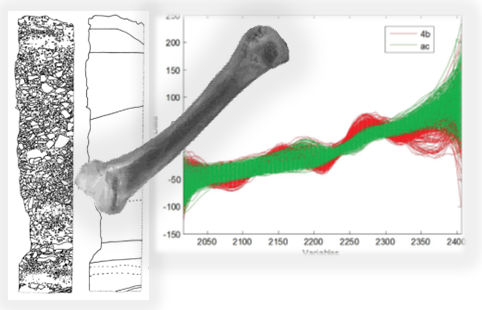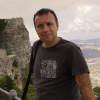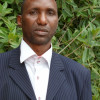Context
In every historical period studied, archaeologists use multidisciplinary approaches to analyse data gathered from archaeological sites. Data are various: stone objects, ceramics, animal bones, human remains, sediments, mollusks, organic remains like pollen, charred remains, walls, wells, houses, etc. Every category of data provides complementary information concerning the study of the archaeological site. Working in partnership with specialists of various disciplines, should allow to reconsider past human way of life and activities. Trou Al’Wesse is an archaeological excavation site situated in the province of Liège, Belgium. The excavations are led by the Service of Prehistory of the University of Liège. The first phase of modern excavations (1988-2001) includes two longitudinal trenches with several archaeological traces witnessing of several human occupations. These trenches revealed a stratigraphic sequence comprising layers from Mousterian, Aurignacian, Mesolithic and Neolithic and then Holocene reworked material. This project aims to understand the human behavior as well as the geological and environmental contexts of prehistoric occupations. The Trou Al’Wesse is one of the rare sites in Belgium to contain a long sequence of intact deposits enabling to deeply investigate the adaptation of human population against climate changes. The study of collagen degradation processes in fossil bones provides plenty of information regarding the past environmental conditions. Collagen analysis also permits animal species identification. It is, then, possible to reconstruct subsistence behavior of human populations linked to fauna available to them.
Objectives
ArchaeoNIR objectives are to combine archaeological analyses with modern spectroscopic methods to detect the presence of bone fragments in soil and try to quantify collagen content of these bones. In this study Near InfraRed Hyperspectral Imaging (HIS) is used as a screening tool and non-destructive analytical method for the selection of samples with a sufficient collagen content for complementary analyses (Zooarchaeology Mass Spectroscopy also called ZooMS) or radiocarbon dating), which are often more expensive.
Expected results
HSI combined with chemometric tools and classical further analyses could play a key role in the explanation of human occupations, adaptation and survival to climate change. A 4 step methodology will be applied: Near infra-red Hyperspectral Imaging (HSI), mass spectrometry (ZooMS), ancient DNA analysis and radiocarbon dating.
Contribution
Near Infrared Hyperspectral Imaging has been developed at CRA-W within the framework of the mad cow (bovine spongiform encephalitis) crisis in order to detect and quantify animal particles in meat and bone meal in animal feed. This expertise in both hyperspectral imaging and the study of bones led the CRA-W to this project. The HSI method is particularly well suited for bone fragments detection in sediments. In a first step, different bones coming from the Trou al’Wesse site will be analysed by HSI and chemometric tools will allow to extract all the relevant information from the data. Preliminary studies are conclusive and would permit the evaluation of collagen preservation in bone fragments.
Partners
Service of Prehistory of the University of Liège and CRA-W, Unit 15.
CRAW off coordinator
Professor Marcel OTTE from the University of Liège.Funding
- FNRS - National Founds for Scientific Resaerch






